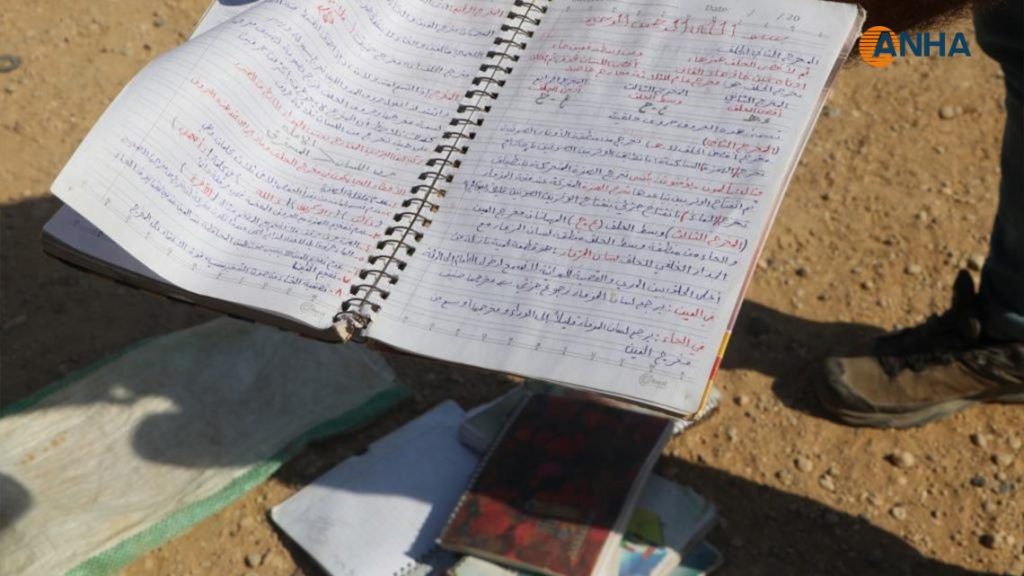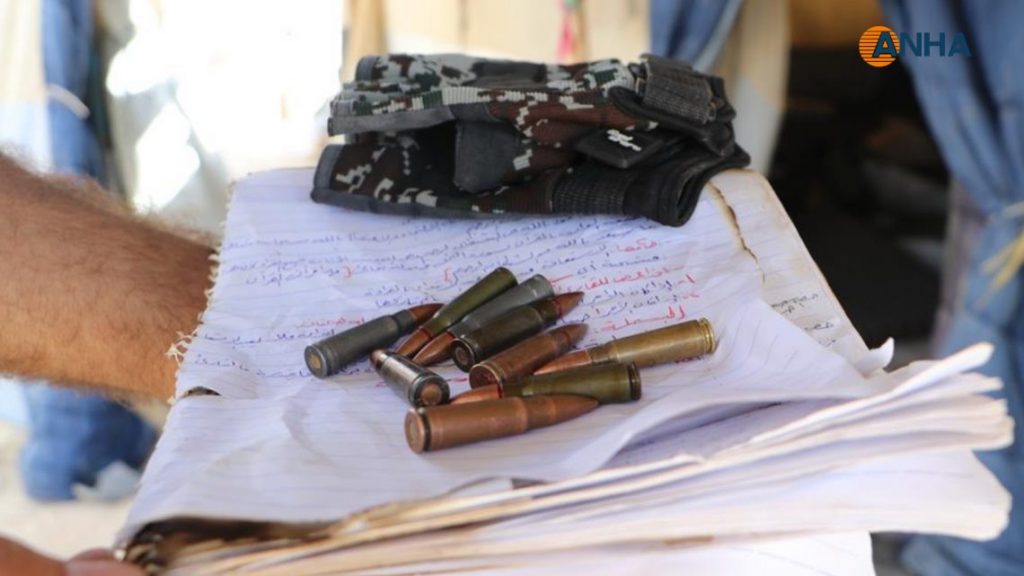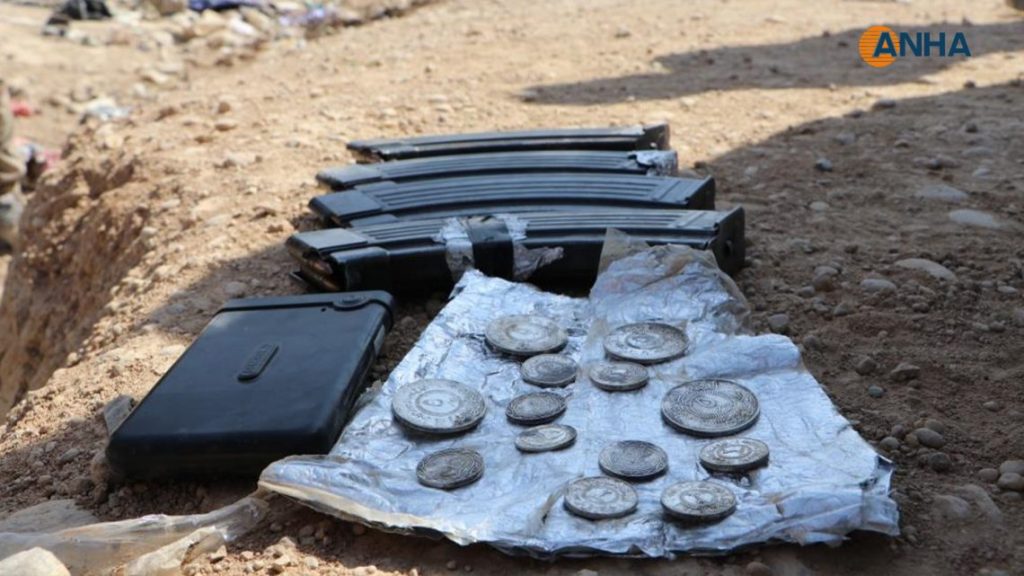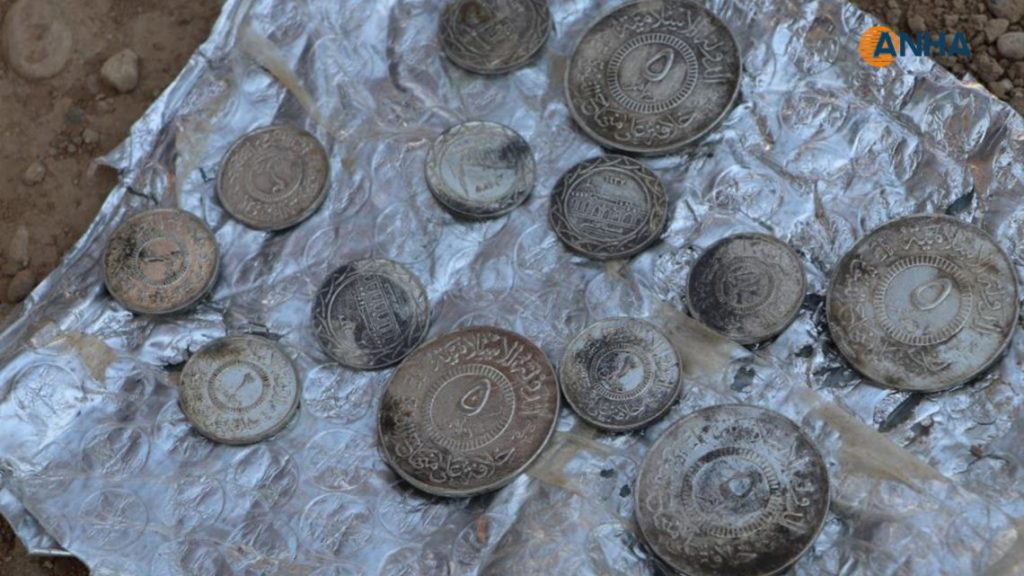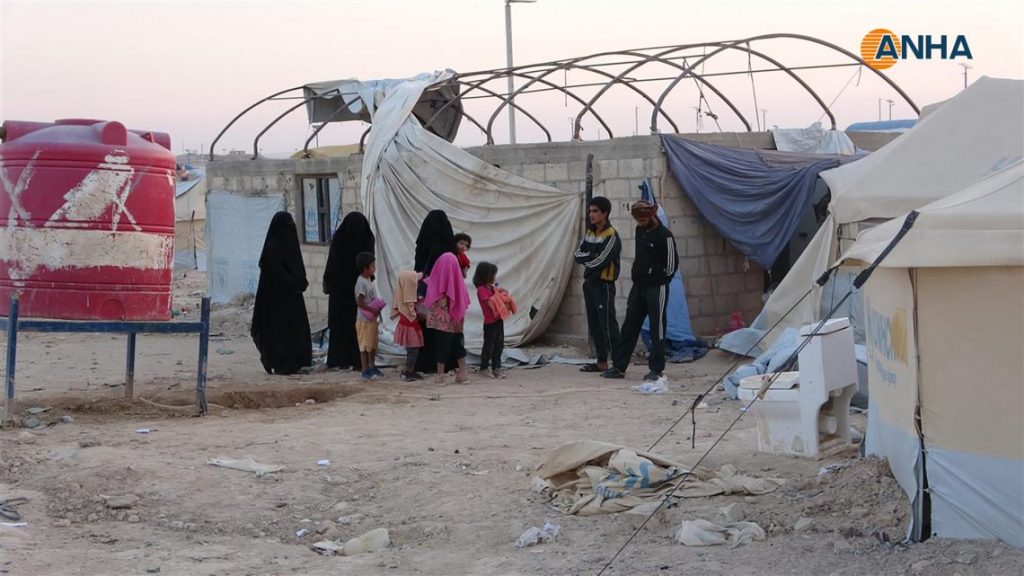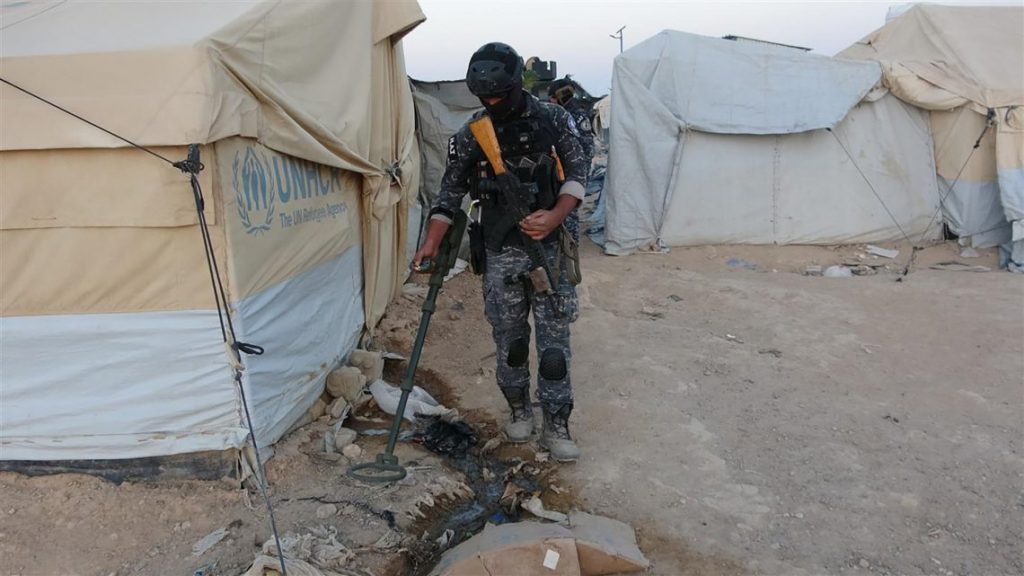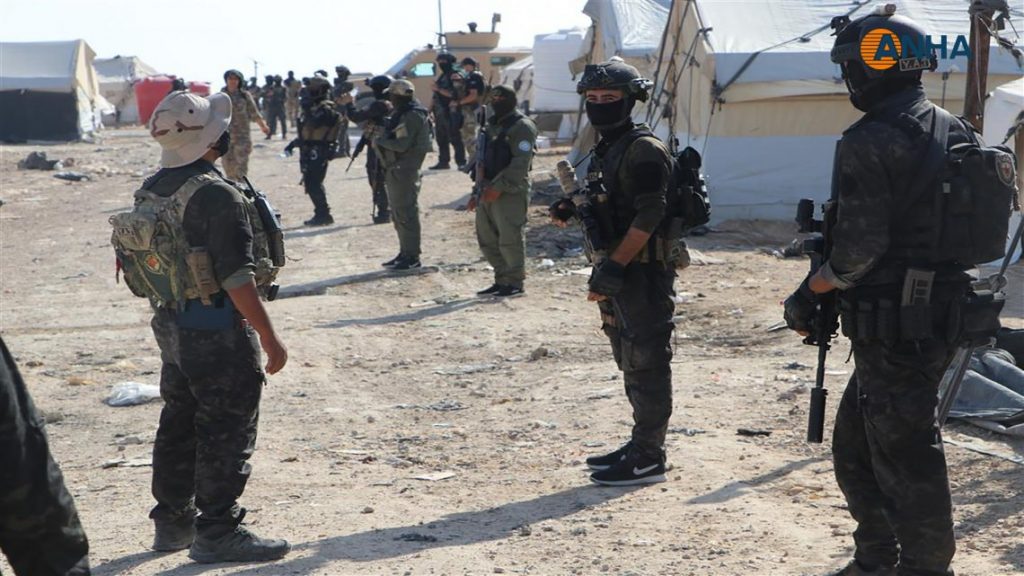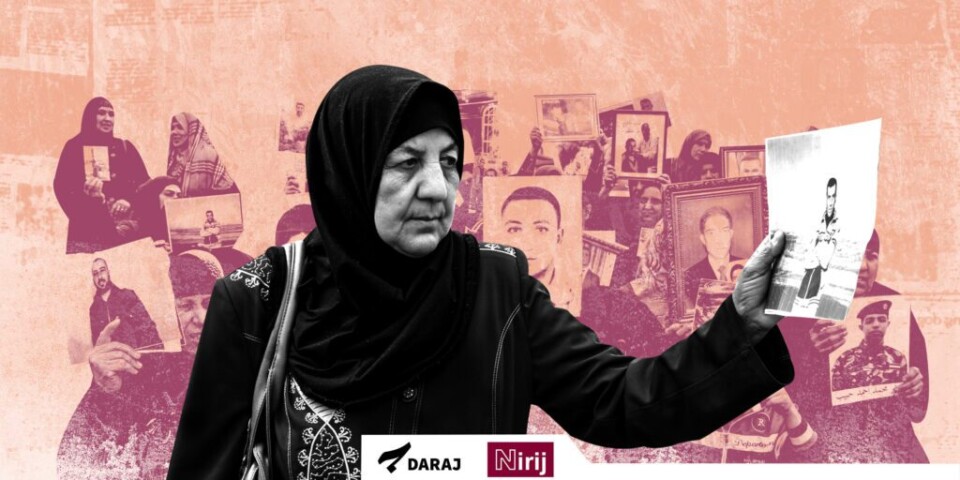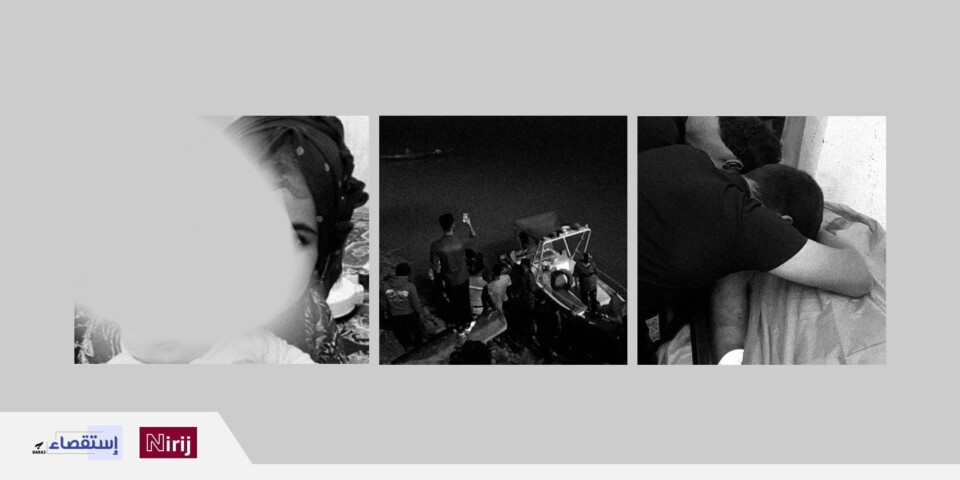state” in the Al-Hol camp… assassinations, torture sites, koranic schools for extremists, and gender segregation
"Revenge, tribal rulings, and popular rejection keep the majority of Iraqis in the Al-Hol camp
"Revenge, tribal rulings, and popular rejection keep the majority of Iraqis in the Al-Hol camp

september 2022:
Abbass Ali Moussa and a team of Syrian journalists
Nour (28 years old) is spending her third year with her child and mother in the Al-Hol camp in southeast Hasakah province in Syria, and always dreams of returning to her happy family life and her house, which she can’t get out of her head in the city of “Haditha” in Anbar province in western Iraq.
However, she fears, like about thirty thousand other Iraqis living in the camp, which monitors describe as a nursery for the new generation of ISIS fighters, that her dream will remain a distant one because two of her brothers joined ISIS which caused the arrest of her father, her husband, and her younger brother in Iraq. All her relatives abandoned them, and her small family is no longer allowed to return to “Haditha” by tribal decision.
“We live in this hell, and we cannot save ourselves,” she tearfully said while sitting on the ground near her tent in the fourth section of the camp. Then, she gripped her black robe and said that this color wasn’t known in her region before ISIS fighters came with their black flags and controlled the city’s fate, turning her life and the life of her family upside down.
My older brother joined the organization in 2015, and our house became a battleground because of my father’s anger and rejection of what my brother had done. After a year, my younger brother also joined it, and my father was afraid for my life, so he agreed to a proposal from a stranger who had no connection to the organization, and I was married to him without even being consulted. Nour said as if she were reading an invisible written version of her biography in front of her eyes.
In 2016, Iraqi forces arrested her husband and middle brother on charges of belonging to the organization. She and her mother moved to Baghouz with dozens of other families, where the organization used them as human shields or hostages according to Nour. There, she heard that her brother who belonged to the organization was killed during the battles. “I was pregnant, my mother was sick, and month after month life became difficult for us and we didn’t know what we had to do until the liberation of al-Baghouz war broke out in 2019 and I fled with my child and my mother to the Hol camp.”
Due to the difficulty of life and the lack of food supplies that they were receiving, and because she is the only caregiver for her mother and child, Nour was forced to work with one of the organizations operating in the camp and as a result, she received many threats from radical women or men from various sections of the camp accusing her of working for “infidel organizations”.
The Hol camp, described by activists as a small Daesh state, witnesses ongoing killings that usually target individuals accused of collaborating with camp management or those whose orientations do not conform to the jihadist ideology that prevails in the camp. According to the self-administration sources of northern Syria, Al-Hol witnessed the killing of 44 people during the first eight months of 2022, including 14 women. On September 5th, the liberation of three women who were strangled with chains and showed signs of torture in addition to the liberation of an Iraqi girl who was detained was revealed.
“Every time the sun shines, I thank God because I am still alive. The camp is very terrifying and lonely when darkness descends and everything is drowned in darkness,” she said with gratitude mixed with fear, stressing that she must continue to work and bear everything to support her child and her mother, who is constantly trying to console her and give her hope by telling her that her father, brother, and husband will soon come out and rescue them, though she knows in her heart that it may never happen.
She quickly got up from her place, as if she remembered something important, and took a few steps before bending down to grab a red plastic bucket of water. She watered a group of green beans and lettuce seedlings planted in a metal milk can and placed them in front of the tent, singing a tune resembling a sad Iraqi song, “Oh, if only hopes grew inside people like these seedlings grow.”
Like hundreds of Iraqi refugee families in the camp, Nour surrounds herself and her family with many fences and avoids most of her neighbors, and tries to remain silent, fearing that any word that does not please the Daesh-minded believers will be reported to the camp authorities who rule in the name of the organization and issue accusations of unbelief (takfir fatwas) and orders of revenge and killing.
In June, the United Nations High Commissioner for Refugees described the situation in the camp as “catastrophic”, stressing the need to provide “additional safe space” to protect women and girls from attacks.
An administrative employee at the camp who refused to mention his name emphasized the atmosphere of terror across the camp, especially in some of its sections. He said it serves as a breeding ground for radical thinking: “Everything here feeds the violence that penetrates children’s minds. It has to stop, and the camp has to be dismantled, but how to do it when other countries, including Iraq, refuse to receive their citizens?”
“Iraqis make up three times the number of Syrians here, and they live under the pressure of losing their loved ones, losing their freedom, poverty, the extremist thought that surrounds them, the revenge that runs in the blood of many of them which they pass on to the new generation.” He added.
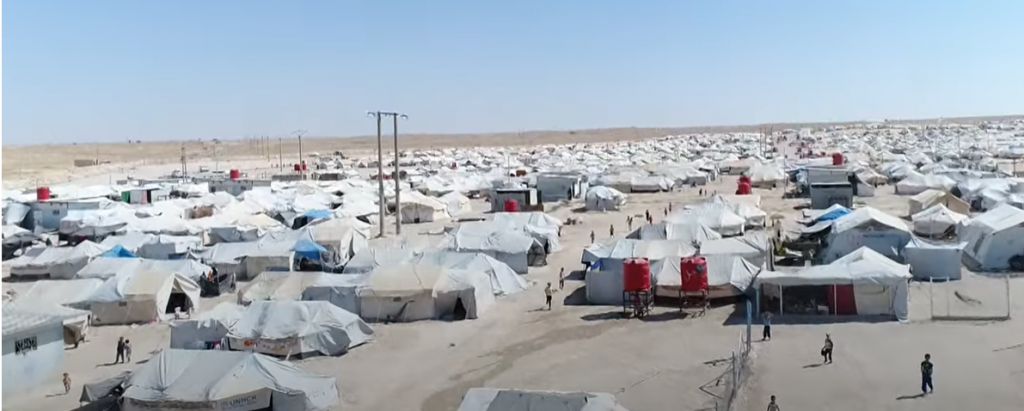
An incubator for the organization and a state for its Cubs
About 56,000 people, including refugees and internally displaced persons fleeing ISIS and also detained women and children affiliated with the organization, live in the Hol camp, which is located in the town of the same name located about 40 km southeast of Hasakah and about 10 km from the Iraqi border. More than half of the total number are Iraqis, most of them are girls and women and a third of them are under 18.
According to employees of international organizations, it is one of the largest and most famous refugee camps in the world, due to its connection to major events that occurred in Syria and the region around a year ago. It was created by the United Nations High Commissioner for Refugees in coordination with the Syrian government after the Gulf War in 1991 and housed 15,000 Iraqis and Palestinians at the time.
It was also used to receive Iraqi refugees in 2003 after the war led by the United States to overthrow the former Iraqi regime and was later used to shelter those fleeing the battles starting in 2016 during the liberation of Raqqa and Deir Ez-Zor from ISIS control by the international coalition and the Syrian Democratic Forces.
The reputation of the camp grew even further due to its involvement in the battles that accompanied the ending of the ISIS military presence in al-Baghouz in March 2019. Also, women, children, and elements of the organization were transferred to it, especially Arabs and foreigners who were refused by their countries and remained stuck there in a special section, the ninth section called Annexes, which includes 10,000 women and children.
According to the United Nations Resident and Humanitarian Coordinator in Syria, Omran Rada, the current camp houses 56,000 people, and 50% of the residents are children under 12 years old. The camp is 3,100,000 square meters and surrounded by an external fence of 12,100 meters. The average individual living space within the camp is 40 square meters. The current number of Iraqis in the Hol camp is 28,956. All of them are refugees and displaced persons from Nineveh Diyala, and Anbar. They are distributed in sections 1, 2, 3, 7, and part of section 4. While the number of Syrians is 10,868 people.
According to Omran Rada, more than 2500 Iraqis have returned to Iraq through voluntary return and relocation operations until June 2022. Omran described the steps taken by the Iraqi government as extremely important in finding solutions and called on other member states whose nationals are in the camp to take action.
“However, the road is still long. Those who have returned represent only 10% of the rest. It may take years of work and preparation. The procedures are moving very slowly and children are growing up quickly in a dangerous environment,” said Ali Hussein, a civil activist.
He added: “I understand the suffering of ISIS victims, including Yazidis, and I understand the local community’s concern about their return, but the wives, sisters, and children of ISIS fighters are victims of their husbands’ or fathers’ ideas or delusions. How to continue punishing them for crimes they did not commit?”.
The United Nations Special Representative for Iraq, Jeanine Hennis-Plasschaert, has also warned about this issue. She stated that “keeping people in restricted and poor conditions would ultimately lead to protection and security risks more than the risks of returning them in a disciplined manner.”
“The return of Iraqis from the Hol camp to their previous areas in Iraq is usually met with widespread public rejection, whether in areas that were under the organization’s control such as Nineveh, Anbar, Diyala and Tikrit or even outside of them in Baghdad or other Iraqi provinces and cities.”
According to what lawmakers and activists have said, the reason is a lack of trust in them. They say elements of the organization can find their way to hide through returning families and forming dormant cells, in addition, the presence of relatives of ISIS elements in areas that were damaged by the organization, will create security problems and lead to retaliatory acts of violence.
During our investigation of the reality of the camp and its divisions and the distribution of individuals within it, we learned that the ninth section dedicated to foreigners (men and women) does not allow children over the age of 12 to be in it, so there are no adult men or even teenagers there.
The camp management does not like to delve into the details of this section due to the sensitivity of those living there, but through our communication with employees working for international organizations there, they told us that children who turn 12 years old are transferred to another place for many reasons, the most important of which are: “prohibiting them from getting married, keeping them in an environment that promotes violence, and instills extremist ideas in them because women raise children with the idea that they are the children of the caliphate.”
United Nations statistics confirm that those living in the Hol camp are from 51 nationalities, Arab, European, Asian, American, and most of them are from (Iraq, Syria, Egypt, Saudi Arabia, Tunisia, Algeria, Lebanon, Turkey, Iran, Germany, France, Britain, some Latin American countries, Indonesia, Turkistan, Kyrgyzstan, Tajikistan).
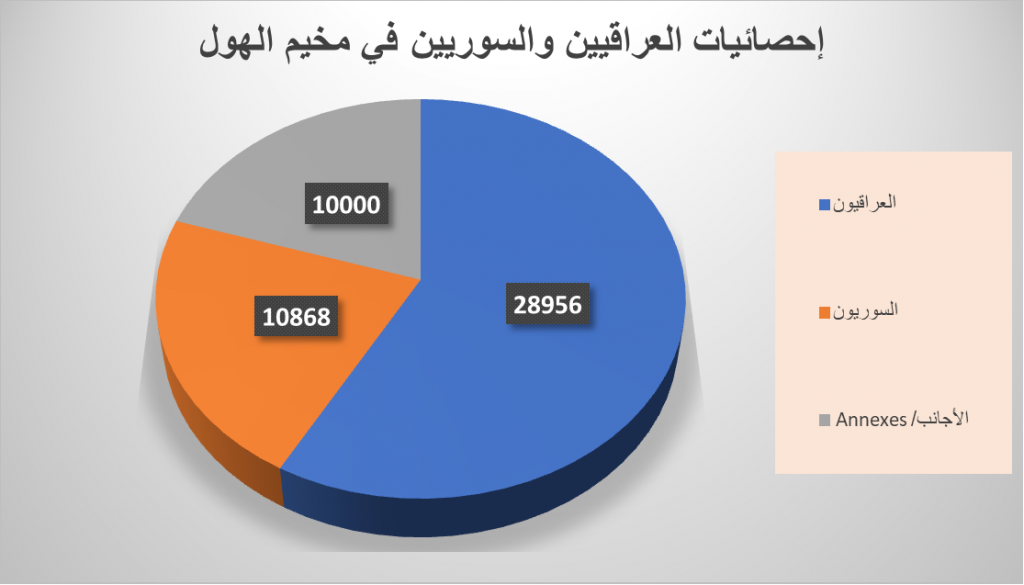
Warnings and an atmosphere of horror
Farhad al-Shami, the officer in charge of the media center official of the Syrian Democratic Forces, warned of the dangerous situation in the Hol camp, saying that a new “jihadist generation” is trying to revive the “ISIS state”, and that there is a generation that is being brainwashed with the ideology of the organization, posing a major threat to the region and the world.
Al-Shami describes the camp as a time bomb: “We do not say this just because we found some weapons, ammunition, and rehabilitation sites, but because there are a large number of ISIS elements who seek to impose ISIS ideology in the camp.”
The official in the Kurdish administration in Syria added: “We are talking about the third generation of the organization. The first generation was before ISIS and is represented by al-Qaeda, which formed the starting point for ISIS, and the second generation established the Islamic State, while the third generation refers to the children who are growing up today in al-Hol camp. These were born when their families came to the camp in 2019. Between 2019 and 2022, thousand and 800 children who belong to ISIS were born. According to the numbers, about 60 children are born there every month. These children are raised on hate and to take revenge for their parents, relatives, and princes.”
The Hol camp is constantly witnessing violence and murder, and crime rates have increased in the current year compared to previous years, which prompted security forces affiliated with the self-administration to launch a campaign against what it called “sleeper cells of the organization” in the camp. Over the course of two weeks, more than 100 suspects were arrested for their alleged affiliation with the organization, also, 110 tents that were used by ISIS cells for meetings or to organize “sharia courses” were removed.
Data from the self-administration security forces confirmed the discovery of “eight detention and torture sites and seven hideouts. In addition, they arrested 23 elements of ISIS cells and confiscated Kalashnikov weapons, military ammunition, communication devices, USBs, and laptops buried underground.”
They also reported finding a tent used for detention and torture, where 3 women aged between 20 and 23 were being held in chains attached to a cement wall. Two of them said they were from Iraq and they had signs of torture and deep wounds on their hands. In addition, a Yazidi girl named Wafaa Ali Abbas was freed. They also found books, notebooks, records containing extremist religious lessons and ideas used to indoctrinate ISIS ideology, and currency belonging to the “Caliphate State”.
A security official said that ISIS-affiliated cells have been active in recent months, carrying out murder, torture, and intimidation using knives and swords, and in some cases using guns equipped with silencers or military rifles. They throw the bodies of victims in sewers to hide their crimes.
Internal security forces spokesperson Ali al-Hassan, commented on the increase in murder cases while pointing to a sewage flow in which bodies were found. The victims showed signs of ” brutal torture”, and were most likely killed with silenced guns or rifles. He attributed the increase in violence to the large escape attempt from the Ghwairan prison last February.
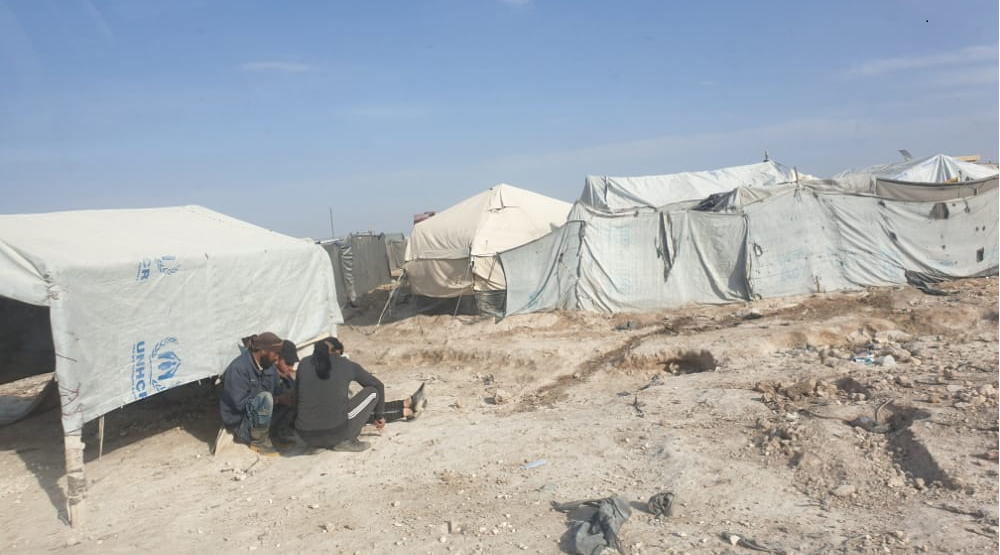
The Syrian Observatory for Human Rights had previously reported that three people were killed in the camp in July, bringing the total number of those killed between January and July to 27, including 6 Iraqis (2 of whom were women), 11 Syrians (8 of whom were women), and 8 women of unknown nationality. Additionally, a nurse at a medical point and a man of unknown identity were also killed. Murders are often carried out with a gun or by strangling the victim and throwing them into the sewer.
The Kurdish People’s Protection Units (YPG) described in a statement the Hol camp as an environment in which terrorist cells are hidden using it for their operations. Siamand Ali, a responsible official for the units, mentioned that they removed empty tents from the camp, which they believe the organization used during its attacks, and began “registering the names of residents and taking fingerprints.”
Amid this environment fraught with tales of murder, news of “violence and jihad,” and a camp that has become a school for promoting the ideology of ISIS, where schools that spread ideas of infidelity and fuel the spirit of revenge are prevalent, children, who make up about a third of the camp’s population, are growing up.
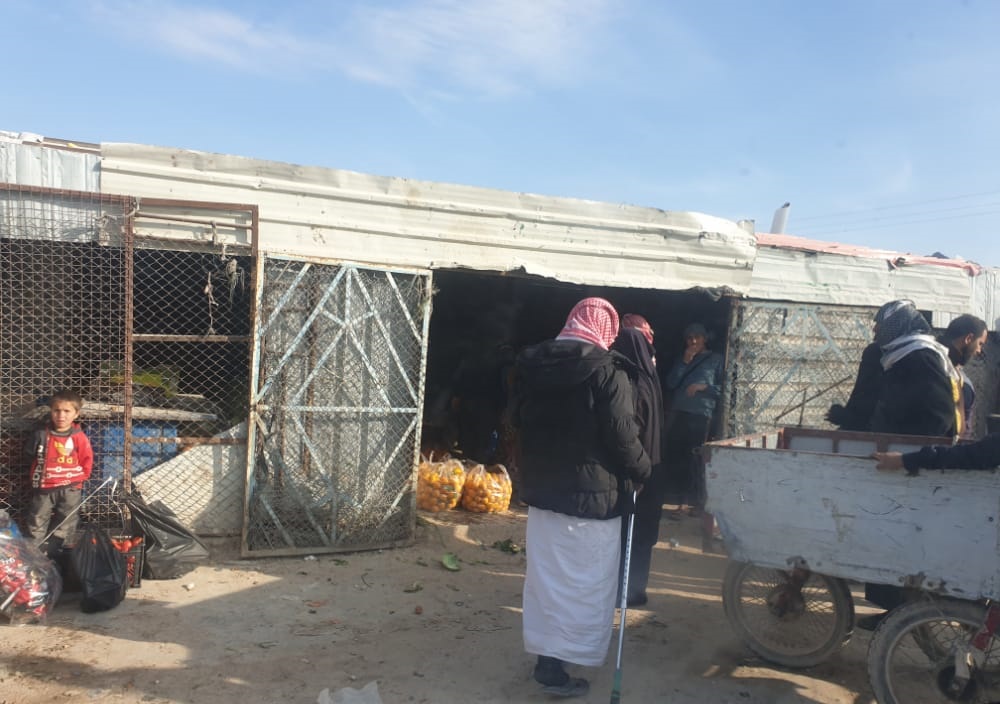
Large vacuum and child labor
Civil activist Ghaida Hussein described the situation of childhood in the camp as very bad, “they all live the same life and routine. Many of them go to school, but a large proportion of children are illiterate for various reasons.”
She also mentioned that some women in the camp sell the children’s winter clothing that protects them from the cold, and their rations of butter and biscuit, as well as their shoes, to get a financial return: “we constantly see hungry and almost naked children wandering around the camp.” She added.
Ghaida noted that among her observations about the lives of children, the absence of one or both parents negatively affects them, and even with the presence of a caregiver, like aunts and uncles, the attention to them is minimal, and these children suffer from bigger problems.”
“The lack of attention to them leads to the spread of diseases among them, or the worsening of their health condition after contracting a mild disease, especially since some of the beliefs prevalent among camp refugees consider going to health organizations or any other organization inside the camp as a form of humiliation, and some may consider it asking help from an infidel party.” She explained.
The activist also pointed out that child labor is common, especially pulling carts that carry vegetables and fruits and other things in the camp market for low wages.”
Children generally live in a great vacuum, and they have nothing to occupy themselves with, as Ghaida asserted, “You find children chasing workers in humanitarian organizations, or throwing stones at organizations’ cars, or clinging to the backs of water tanks and passing cars that carry food supplies, or you see them gathering around contracting workers who work in excavations, lighting poles, and water tanks.”
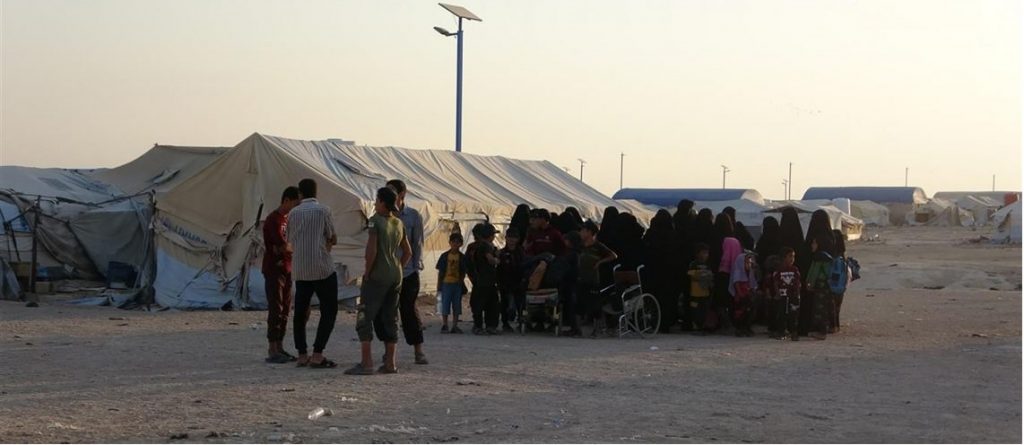
Widespread Illiteracy and war against education
An employee working for an international organization in the al-Hol camp told us that a large percentage of Iraqi children are illiterate, and have not learned to write and read even though they are over the age of students in primary school. The same applies to foreign children in the ninth section of the camp.
Some children did not learn because they were several years late in starting school (between 2014 and 2019), and many families, especially families of ISIS, refused to send their children to schools run by organizations and following official educational curricula.
And he added: “Some families want their children to receive education to get rid of the ignorance that breeds wars, while others believe that education in the camp is laughing stocks and part of a war directed against them and their children to overturn their beliefs, so they keep them inside the tents, and at best they send them to the koranic schools they have established where they teach them the Quran, the sects, and their ideas.
Education in the camp is divided, according to the international employee, into two sections. The first is established by the families where children learn the Quran and the doctrine of their sects. The second is educational centers that follow a curriculum from first grade to sixth grade of primary school and are affiliated with the organization “Save the Children”.
The international employee suggested that the science subject was the reason, as the parents refused to teach it because it contained a topic about the human body and threatened to not send their children if it was taught. It was removed from the curriculum after the incident.
“This was evidence that the residents of the camp prefer to send their children to Koranic schools to ensure that they are taught the Quran and their religious beliefs, and to avoid exposing their children to other, foreign and strange Western cultures that might pollute their minds.” He said.
Radical families also rejected mixing male and female students, so they were separated in classrooms. Male teachers taught the boys and female teachers taught the girls. According to the international employee, the matter reached the point of threatening the administration of the only educational center currently operating not to mix the teaching staff as well, the segregation of male and female students and staff may likely have been an additional reason for the destruction of the educational center in the third section of the camp.
He added: “They also prohibit any activities that they claim are related to Western cultures, such as activities that counter extremism and constantly threaten to stop them. The humanitarian organizations do not have any ways or mean to put pressure on them because they fear for their lives from the threats, and they do not want the children to be dropped out of school under any pretext.”
The United Nations High Commissioner for Refugees said that facilities established by humanitarian organizations are subject to vandalism, looting of equipment, and recurrent closures due to security incidents in the camp, and this makes it difficult to assist those in need.
In the third section of the camp, a woman named Aisha with her two children was watching the passers-by. She told us that she spends her day here sitting “waiting for nothing”. She occasionally exchanged conversations with the passers-by! She showed her palms and raised them high, indicating the emptiness in which she lives with her two young daughters (8 and 6 years old). Her two sisters live the same life with their young children. She pointed at them with her hand. They were standing a few meters away from a nearby tent.
At first, Aisha did not answer our question about why her daughters were not sent to school. But she was ready to tell her story and how she ended up in the al-Hol. Aisha’s husband, who was falsely accused of belonging to ISIS according to her, was killed by unknown assailants in Anbar in 2017. Meanwhile, her sisters’ husbands were arrested in Syria because they were with the organization. She recounted the stations of her journey to Syria with her sister, and the hardships she experienced due to her family’s affiliation with ISIS before they ended up in the camp which she described as a big prison.
Aisha was skeptical of the usefulness of her daughters’ education, saying, “What will they become in the camp, doctors?” She jokingly added, “Schools didn’t do us any good when we were free, so how will they benefit us now that we are captives and have no future? That’s why I teach them the Quran and Hadith myself, as well as sewing and embroidery and baking, something that will benefit them if they get married.”
A barter to secure their needs
A small number of camp residents earn money by working for active organizations there, or through small projects they’ve started for themselves, like selling vegetables or food in the camp market, or by receiving financial transfers from outside the camp which does not happen often.
In addition, some people sell the aid allocated to them, but the situation varies from one section to another, and the exchange of work for money is only present in the men’s sections.
Otherwise, the majority, especially the Iraqis and foreigners, rely on the food supplies provided to them by organizations working there such as the UN refugee agency, the World Food Program, the International Rescue Committee, and other humanitarian organizations.
Given that these baskets do not contain vegetables, fruits, or animal proteins, the camp residents resort to bartering, trading surplus items from the rations such as rice and sugar for vegetables.”
Many residents of the camp emphasize that the food baskets have been reduced in recent months and now only include oil, sugar, and rice, which increases the suffering of thousands of families who do not have any other means of livelihood.
H.J., a 15-year-old girl from southern Mosul, aspires to return home soon. She said that the food situation is getting worse and it’s becoming one of the biggest concerns for her and her family. They fear that the aid will be cut off, and they don’t know how they will survive. Many people including her brothers and sisters, do not have financial support. She wondered, “for how long are we going to ask for aid?”
To ensure their water needs, residents of the camp rely on the water tanks provided by the organizations operating there, as well as wells water, which has varying levels of salinity. In this regard, the camp also faces a scarcity of water due to a restriction on the entry of water tanks and also due to a shortage of water storage tanks distributed throughout the camp.
Both the refugees and the organizations describe the situation of the service in the camp as “very bad”. A representative of one of the health organizations operating in the camp said, “Yes, the service situation is bad because the facilities are limited, and the wastewater is spread in the camp in the form of surface sewages passing through the tents, which is a persistent problem that brings various types of insects and diseases.”
Healthcare services are also limited, despite the presence of many organizations concerned with health, such as the Kurdish Red Crescent and the Syrian Arab Red Crescent, the International Red Cross Hospital, in addition to some organizations that specialize in providing care for children of specific age groups like the Saint Ephrem association, the Charity Love Society, Doctors Without Borders, and the Mar Asia association.
However, these organizations don’t provide medications for all cases, and some patients may need to be transferred to specialized hospitals in Hasakah City if necessary. Typically, these patients are discharged based on medical referrals prepared by the camp management.
In the seventh section of the camp, we met Emad (36 years old) from the city of Al-Ramadi, the center of the Anbar Governorate. Since the death of his parents, Emad bears the burden of caring for his eldest brother who suffers from autism, intellectual disability, and lower extremity paralysis.
Emad said that he used to work at the Iraqi Communications Ministry and lived a peaceful life with no complaints, enjoyed playing football and watching major leagues, and his happiness was completed when he married his cousin. “That was before our life turned upside down in 2014,” he said, avoiding mentioning the name of ISIS.
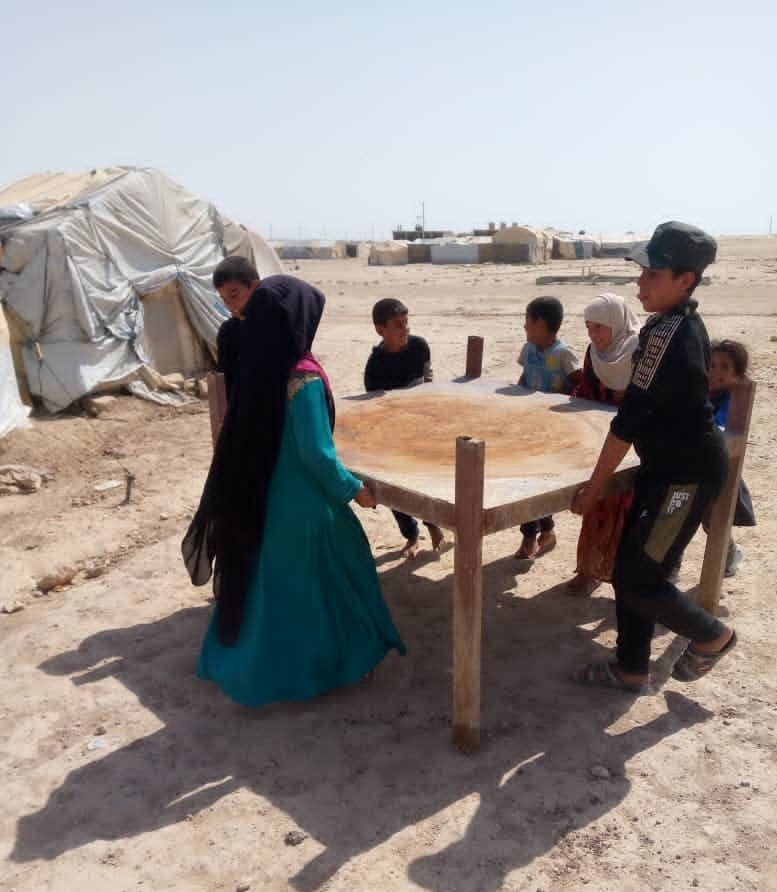
He put his hand on his forehead and said: “They imposed strange customs on us and our women, prohibited everything, and demanded that we grow our beards and wear the veil.”
As he took a sip from his cigarette, he added that even smoking was prohibited. He took a deep breath, released the smoke in the air, and added: ” We were always afraid that they would force us to join them against our will, but God saved us from them. But during the intense battles around the city of Ramadi, we were forced to flee to al-Baghouz under threat. They used us as shields for their withdrawal.”
He added: “It was always on everyone’s mind that if they thought of running away, they would be killed first. We saw things that no human should see; cases of murder, violence, torture, and fear that cannot be described. During the ceasefire in early 2019, we went to the Hol Camp and we have been here ever since.”
He held the cigarette with two fingers and nod his head, then shook it as if he is freeing himself from a disturbing thought, and said: “I will never forget the first day in this camp, especially the difficulty of securing my disabled brother’s needs, there was no privacy he likes in the camp. I put a barrier around my tent because I can’t do anything about it, that’s all I can do” and he pointed to an irregular fence made of wooden planks.
He put back the cigarette in his mouth and explained the situation of his disabled brother and the hardships he and his small family endure. “When we were still in Iraq, my father and mother would put in all the effort they could to help him. But after their death, the responsibility fell on me and my wife, it became increasingly difficult especially since he has been growing older, and his needs are growing with him. For example, if I don’t bring him candy, he’ll cry like a small child.”
He threw the cigarette butt away, “We will stay here, I don’t know, maybe for many more years, because we no longer have a house there to return to, and I don’t think I will be able to provide housing and demands of life for my family and take care of my brother in Iraq.”
A return program
On August 11th, the self-administration in Syria transferred 150 families, consisting of 670 Iraqis, 620 of them were members of families of ISIS fighters and 50 individuals were arrested leaders and members of the organization, to the government of Iraq.
In early June, the Iraqi authorities announced that they had received 50 members of the organization from the Syrian Democratic Forces that are affiliated with the Syrian self-administration. Security sources estimated that there were around 3500 Iraqi prisoners at the time.
In early May, the Iraqi Ministry of Migration and Displaced announced that it will receive 500 families from the al-Hol camp during the current year, mostly children and women, in several batches. Indeed, they received more than 150 families during the same period.
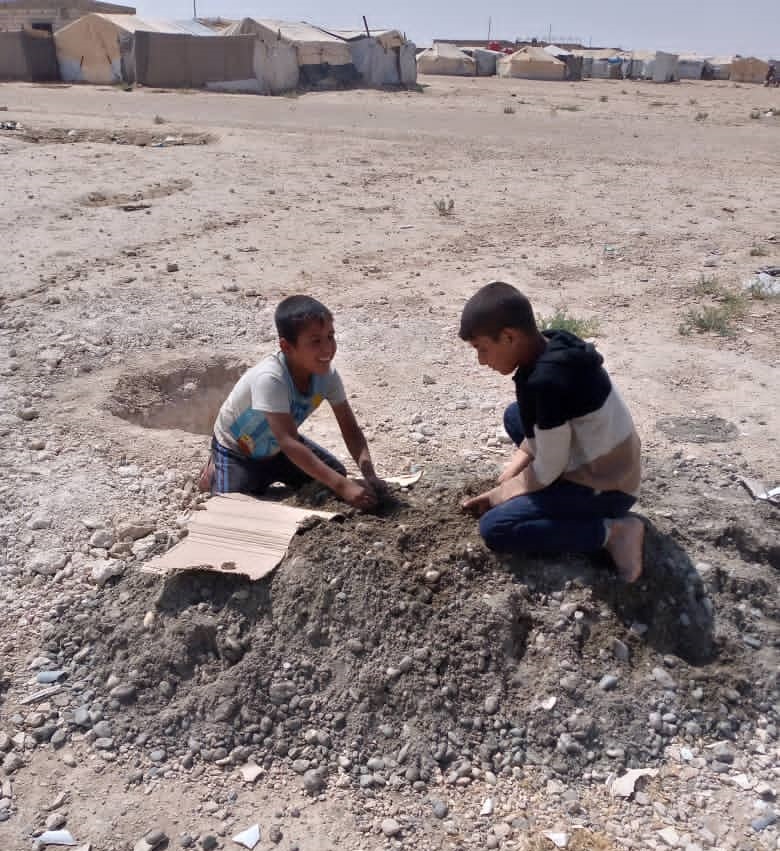
The ministry said that it was able to receive 150 families comprising between 650-700 individuals at the highest rate, to ensure safe transportation, food, and shelter for them.
The Director of the Migration and Displaced Directorate in Nineveh Governorate, Khalid Abdelkarim Ismael, mentioned in a press statement on July 24th of last year, that the Migration Directorate received more than 5 groups, equivalent to 660 Iraqi families, at the Al-Jadhaa center for psychosocial rehabilitation and reintegration, to reintegrate them into society.
He explained that once they complete psychological rehabilitation which lasts from two to three months, with the participation of several local and international organizations, they can leave for their homes. He added that more than 394 families returned to their areas, most from Al-Anbar Governorate, followed by Nineveh and then Saladin Governorate.
Iraqi security forces are reviewing the security records of families who wish to return, to ensure their safety and confirm the absence of individuals affiliated with ISIS among them.
The Ministry of Migration confirms that more than 90% of those who returned do not pose any security concerns, but they were mixed with the people in the Al-Hol camp, which houses the families of ISIS, and due to the fear of the impact of those on them, they undergo rehabilitation before being reintegrated into society.
Ali Abbas, the spokesperson for the Ministry of Migration and Displacement, stated that the ministry’s plans for the return of Iraqi citizens and families from Syria “did not cover any ISIS terrorists” and that since the return program has started, the number of Iraqis in Al-Hol camp has decreased from 30,000 to around 27,000 Iraqis.
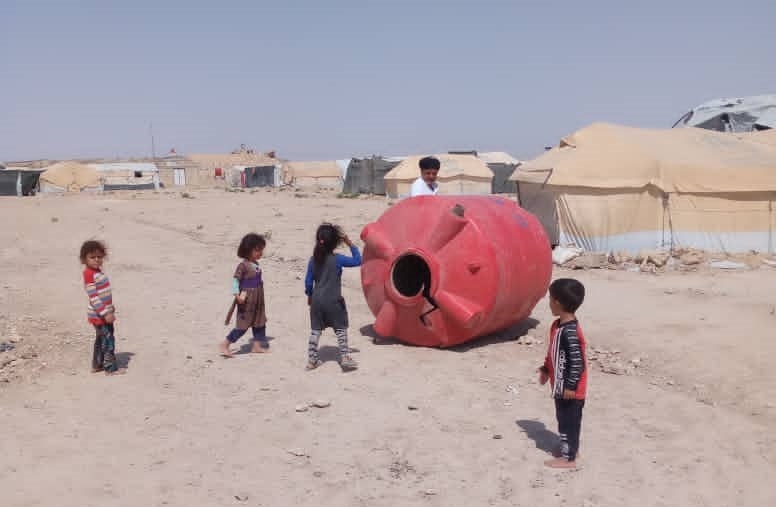
Afraid of homeland
“Besides the fact that their security files haven’t been settled by the Iraqi government and some local communities refuse to accept their return due to crimes committed by their family members, with fear that this may bring violence and insecurity to their areas, expert and researcher Mokdam Khalid Aziz mentioned additional reasons why some Iraqi refugees refuse to return to their home regions, including safety concerns as many of them are affected by rumors and fear of revenge. ”
“Those who reject going back, leaving, and even registering for the trips arranged for Iraqis to return to their homeland claim that they fear being chased by legal authorities and that their destiny would be either imprisonment or death. Some of them mentioned factions within the Popular Mobilization as a primary threat.”
He also mentioned that there are economic reasons, as it is hard for them, specifically for women who lost their breadwinners, to establish a new life in Iraq and to meet daily living expenses due to the challenging economic circumstances and difficulties in providing housing and food. Therefore, they would rather stay in the camp as long as they have shelter for themselves and their children and access to food and medical aid during emergency cases.”
“The expert pointed out other reasons why the Iraqis living in the Al-Hol camp refused to return, one of them being fear of revenge and assassination further to tribal laws. Some of them even fear for their safety within the camp itself, prompting the camp’s management to establish the “Camp of Peace” to protect those who are afraid of similar issues.”
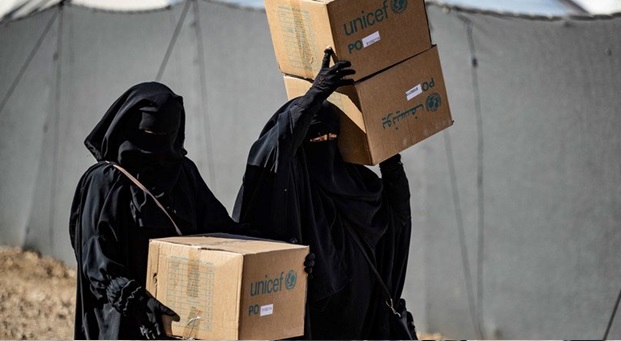
The researcher said that in June 2022 the United Nations had confirmed that 100 people, many of them women, were killed in the Al-Hol camp over 18 months.”
He stated that there are individuals who are waiting for resolutions for the situations of their family members or relatives who are currently being held in Iraqi prisons and their return is dependent on the release of their relatives. Additionally, some individuals had lost their homes or their towns have become uninhabitable.”
“Muna or ‘Um Mahmoud’ as she likes to be called,” is an Iraqi old lady in her seventh decade, from the city of Al-Ramadi in the Anbar Governorate. She has three sons and three daughters. She used to live a decent life with her husband who was working in the field of contracting and two of their sons were assisting him, while their eldest son Mahmoud was working as a nurse in a government hospital and was a source of pride for the family. All of this was before ISIS took control of the city in 2014.
“One day, Mahmoud came to us and told us that he had joined Daesh (ISIS) and asked his brothers to join him too. The shocking news and the intense anger and argument that followed it caused a brain stroke to his father that led to paralysis in his limbs, and he died a few months later due to sorrow,” Um Mahmoud recounted the story, barely able to hold back her tears.
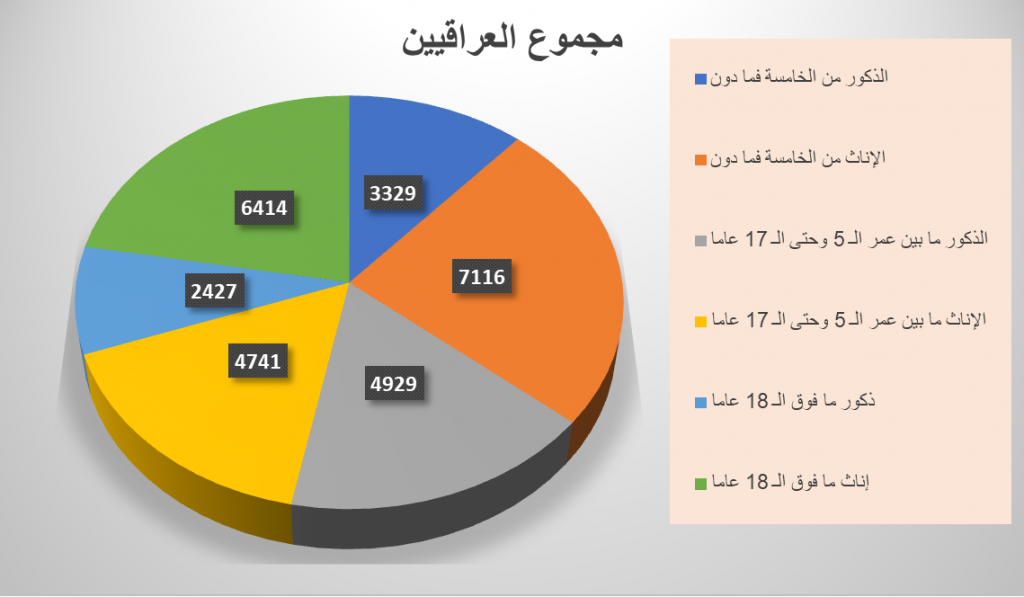
Later, the Iraqi forces arrested the middle brother, who is currently in Nasiriyah prison. Meanwhile, the youngest brother and his family, along with Um Mahmoud, joined Mahmoud and his family who had moved to Tel Afar. But there, Mahmoud was killed, so they all moved with other families of the organization’s fighters to Al-Baghouz. After its liberation in 2019, the youngest son was arrested and he is now in a prison in Al-Hasakah, while Um Mahmoud, with the wives of her sons and her 12 grandchildren, moved to the al-Hol camp.
Um Mahmoud works in a small vegetable shop in the camp market to support her family. She complained that what she receives from the World Food Program is not sufficient, and she fears that her health condition worsens so she will not be able to fend for her family. “I have cataracts and high blood pressure”.
“I Consider the possibility of returning to Iraq”, the woman said, pointing her hand towards the northeast of the camp. “If we ever have the chance to go back to Iraq, I would choose to go to Erbil because it is safe and no one there would know us. Also we, as women and children, would not be held responsible for the actions of our son who joined ISIS against our will.”
This investigation was produced by “Al-aalem Al-jadeed” under the supervision of the investigative network “NIRIJ”
